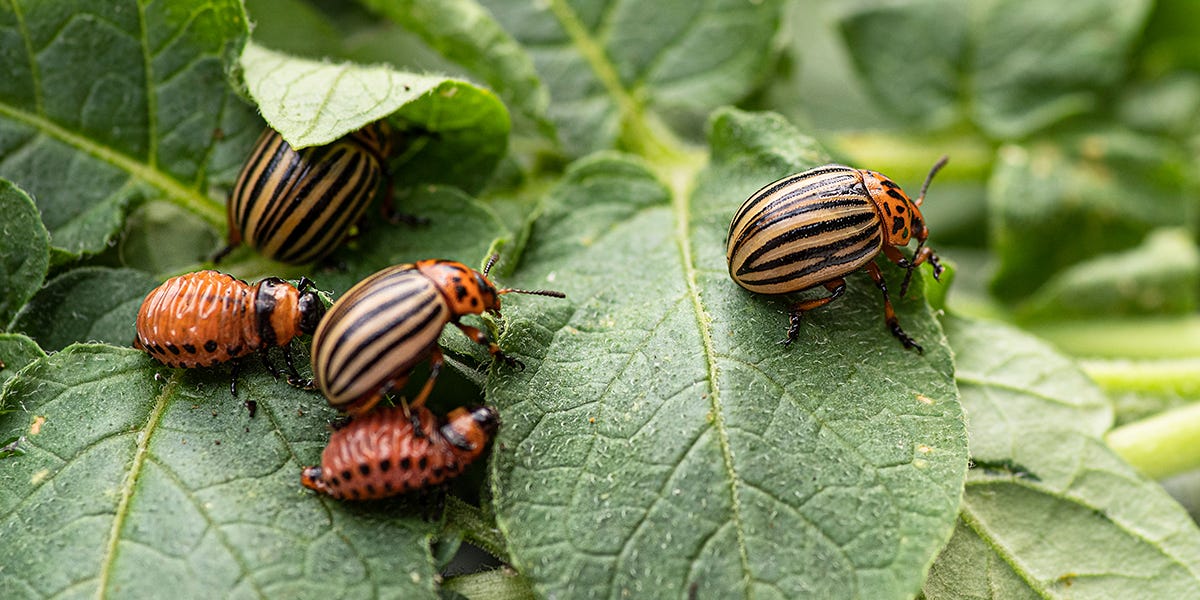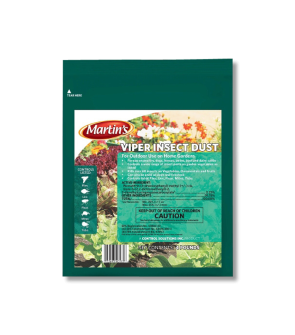Gain access to personalized product screening, the best pricing, rewards, and more!
Most Effective Products
How to Get Rid of Potato Bugs In Your Garden
This page is an expert guide on getting rid of potato bugs in your garden using the products and methods our experienced pest control specialists suggested. Follow this guide and use the recommended products, and you will eliminate potato bugs, which is guaranteed.
A pest notorious for showing up in residential gardens and causing destruction is the Colorado potato beetle, commonly known as the potato bug. These crop-damaging pests got their name from being discovered in Colorado in the late 1800s for feeding on potatoes, but they have since spread across the entire nation and expanded their diet to include other plants and vegetables.
Home gardeners and agricultural farmers have declared potato bugs a major pest. Both potato beetle adults and their larvae are destructive to plants. One of the most frustrating aspects of dealing with this bug is not only that it can create significant crop damage in a short amount of time but also that it is resistant to many garden insecticides.
If you are dealing with a potato bug infestation and damage to your precious garden plants, read on to find out how to kill and remove them from your garden using our DIY guide and expert advice.
Identification

Before you can implement a control program, you need to identify and make sure that the pests you see are, in fact, potato bugs and not some other pest. Careless identification can lead to using the wrong pesticides, wasting your time and money.
- The potato bug, also known as the Colorado potato beetle, is a tiny beetle that is about 3/8 of an inch long.
- As adults, potato bugs have a hard-shelled body and orange-colored heads and are covered with black stripes. They breed quickly, laying up to 30 eggs at a time.
- The potato beetle eggs hatch larvae that are dark red with blackheads. As they mature, the red becomes pink or salmon.
- During the plump larval phase, potato bugs are also covered in black spots and can mature into adults as quickly as 10 days. These bugs eat out potato plants and damage them to the point that they are unfit for consumption.
Use the image and description above to identify potato bugs properly. If you are unsure, contact us and we will assist you with proper identification.
Inspection

Once you have confirmed that you are dealing with potato bugs, you can proceed with an inspection. During this phase, you will need to locate the areas where you see potato bug activity to determine where to focus your pesticide treatment.
Where To Look
Focus your search on areas where your garden plants, flowers, and vegetation are in your yard. Potato bugs are often seen feeding on the leaves and stems of potatoes but can also be seen feeding on peppers, tomatoes, or eggplants, among other similar crops.
What To Look For
You'll look for damage to garden plants and holes in your potatoes and other vegetables. It would be best to look for active adult potato bugs, their larvae, and any egg casings they have laid on or around the infested plant.
Treatment
Getting rid of potato bugs can be tough because they are known to develop resistance to chemical treatments. We recommend collecting or manually removing any potato bugs, larvae, and egg casings by drowning them in soapy water and applying Viper Insect Dust.
Viper Insect Dust is a powder-based insecticide designed to kill and control many garden-damaging pests, including potato bugs, without harming the vegetation. Before handling or applying pesticides, wear personal protective equipment.
Step 1: Apply Viper Insect Dust
Wearing safety gloves, use a dust applicator such as a shaker can, a handheld pesticide duster, a bulb duster, or another appropriate duster to lightly and precisely apply the product. Fill the duster halfway with the Viper Insect Dust and then lightly apply it to your Potatoes and other garden plants.
Start applying at the farthest corner of the treatment area and work backward to avoid contact with dusted surfaces. Dust lightly to cover the top side and underside of vegetable and leaf surfaces with a thin, even film of dust. This is because many potato bugs will hide on the underside of the plant.
Apply up to 8 times per season. Viper Insect Dust can be applied until 14 days before harvest.
Prevention

To keep potato bugs away from your garden vegetables, you must place some preventative measures in place. Here are a few things we suggest to hinder the return of potato bugs:
- Keep your garden clean and do not let there be any loose leaf litter, otherwise potato bugs will try to find a home in such an environment.
- Clean any dead grass from your garden, any wooden plank or boards lying around, and rocks, as these are dark places that potato bugs find suitable.
- You could also introduce natural predators of Potato Bugs to your garden to regulate any future potential re-infestation. Mulch your plants with straw to create a habitat that will attract ladybugs, ground beetles, and green lacewings. These bugs will get rid of potato bugs for you while doing no damage to your garden.
Key Takeaways
What are Potato Bugs?
- Potato bugs refer to the Colorado potato beetle, a common garden pest known for damaging potatoes and other vegetables. They can do a lot of damage if no intervention is made.
How to Get Rid of Potato Bugs
- We recommend a combination of manual removal of potato bugs and applying Viper Insect Dust on your plants to kill potato bugs and end the infestation.
Preventing Potato Bug Reinfestation
- To prevent potato bug re-infestation, reapply Viper Insect Dust, reduce conducive conditions like leaf litter, and introduce natural predators like beetles and ladybugs.







